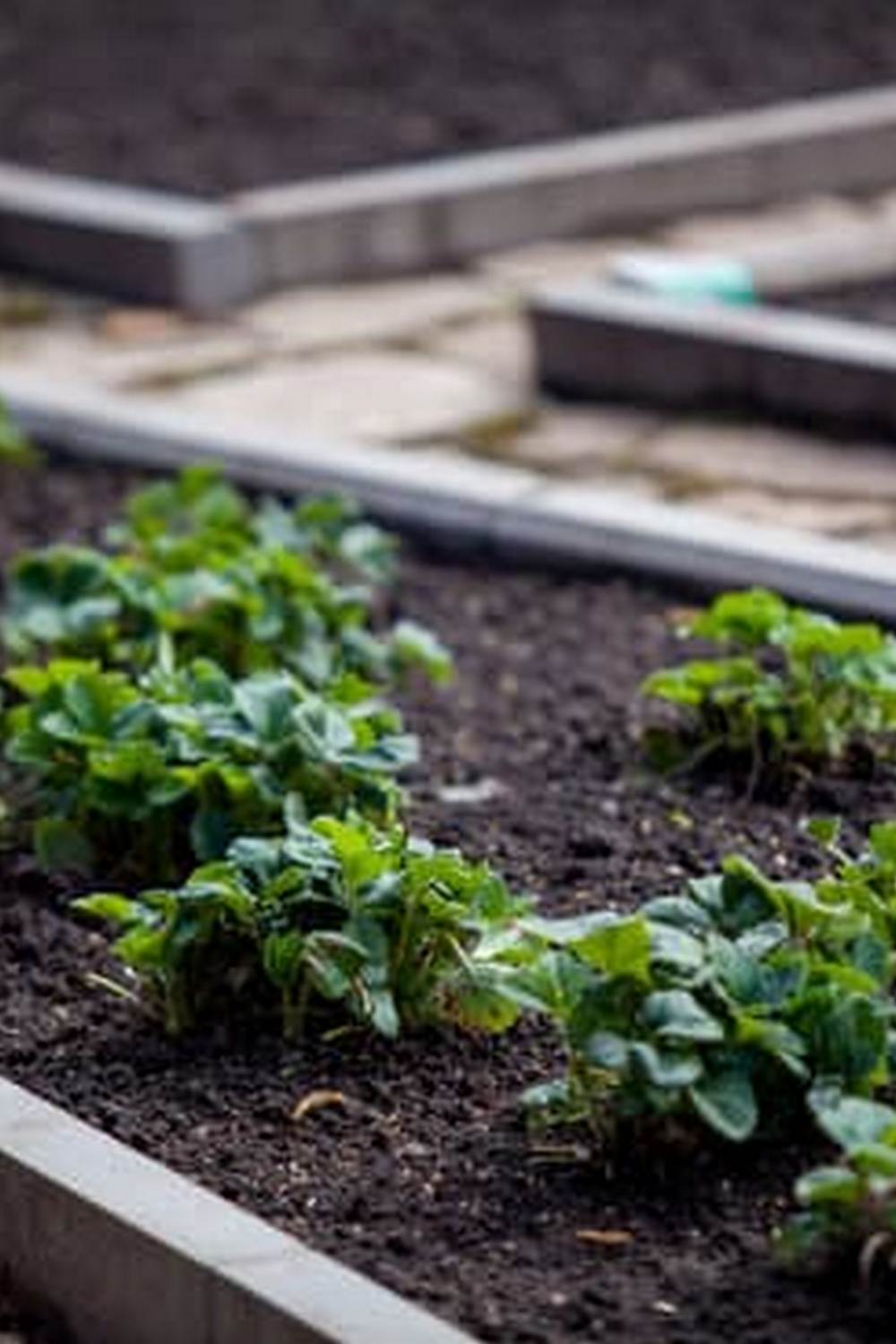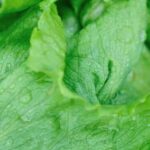Are you looking to have a flourishing vegetable garden but find yourself overwhelmed with where to start? The Week by Week Vegetable Gardener’s Guide is here to help you navigate the process easily and efficiently. By following this structured schedule, you can ensure a bountiful harvest while enjoying the therapeutic benefits of gardening.
A Week by Week approach to vegetable gardening breaks down tasks into manageable steps, allowing even beginners to successfully grow their own produce. This method eliminates the guesswork and ensures that each phase of your garden’s development is properly attended to. From soil preparation to harvesting, this guide will provide you with the tools and knowledge needed for success.
By dedicating time each week according to the outlined schedule, you will not only see tangible results in your garden but also experience the satisfaction of nurturing plants from seed to fruit. Stay tuned as we delve into the benefits of following a Week by Week gardening schedule, essential tools and supplies required for success, planning your garden layout effectively, and more tips on maintaining a healthy vegetable garden throughout the season.
Benefits of Following a Week by Week Gardening Schedule
Week by week vegetable gardening offers numerous benefits for both experienced and novice gardeners alike. By following a structured schedule, you can effectively plan and manage your garden throughout the growing season. Here are some of the key benefits of following a week by week gardening schedule:
- Organized Approach: A week by week gardening schedule helps you stay organized and on track with tasks that need to be accomplished in your garden. From soil preparation to harvesting, each step is clearly outlined for you to follow.
- Maximizing Productivity: With a set plan in place, you can maximize the productivity of your vegetable garden. By planting at the right time, providing proper care, and addressing any issues promptly, you can ensure healthy growth and abundant harvests.
- Optimal Plant Health: Following a week by week gardening schedule allows you to monitor the health and progress of your plants regularly. This proactive approach helps identify any issues early on so that they can be addressed swiftly, resulting in thriving plants.
In order to fully reap the benefits of a week by week vegetable gardener’s schedule, it is essential to have the right tools and supplies on hand. Here are some of the key items you will need for a successful gardening season:
- Garden Trowel: Essential for planting seeds, transplanting seedlings, and weeding.
- Gardening Gloves: Protect your hands from dirt, cuts, and thorns while working in the garden.
- Watering Can or Hose: Ensure your plants receive adequate water consistently throughout the season.
- Fertilizer: Provide essential nutrients to support plant growth and development.
- Mulch: Help regulate soil temperature, retain moisture, and suppress weeds in your garden beds.
By incorporating these tools and supplies into your week by week gardening routine, you can set yourself up for success in creating a flourishing vegetable garden that yields bountiful crops all season long.
Essential Tools and Supplies for a Successful Week by Week Gardening
When embarking on a week-by-week vegetable gardening journey, having the right tools and supplies at your disposal is crucial to ensure a successful and fruitful harvest. One of the most essential tools that every gardener should have is a sturdy set of hand tools, including a trowel, pruners, and a weeder.
These tools will assist you in planting, pruning, and maintaining your garden throughout the season. Additionally, investing in high-quality gardening gloves will not only protect your hands from dirt and cuts but also provide better grip and comfort while working in the garden.
In addition to hand tools, having a reliable watering system is key to keeping your vegetable garden healthy and thriving. A hose with an adjustable nozzle or a watering can will allow you to easily water your plants without causing waterlogging or drought stress. It’s important to water your plants deeply but infrequently, ensuring that the roots receive adequate moisture without being saturated.
Furthermore, incorporating organic fertilizers and mulch into your gardening routine is essential for providing necessary nutrients to your plants and improving soil health. Organic fertilizers such as compost or manure are natural alternatives that promote healthy growth without harmful chemicals.
Mulching helps retain moisture in the soil, suppresses weeds, and maintains soil temperature. By using these essential tools and supplies in your week-by-week vegetable gardening schedule, you’ll set yourself up for success and enjoy a bountiful harvest of fresh produce throughout the season.
Planning Your Week by Week Vegetable Garden Layout
When it comes to planning your week by week vegetable garden layout, there are a few key considerations to keep in mind to ensure a successful and productive growing season. One of the first steps is to decide on the location of your garden. Choose a spot that receives ample sunlight throughout the day and has access to water sources for easy irrigation. Additionally, consider factors such as soil quality, drainage, and proximity to other plants or structures.
Determining the Layout
Once you have chosen the location for your vegetable garden, it’s time to determine the layout. Consider factors such as the size and shape of your garden space, as well as any existing features such as trees, fences, or structures. You may want to create separate beds for different types of vegetables or group plants together based on their water or sunlight requirements.
Creating Pathways and Access Points
In addition to planning the layout of your vegetable garden beds, don’t forget to consider pathways and access points. Ensure that there is enough space between each bed for easy maneuverability and maintenance tasks. Creating defined pathways can also help with weed control and prevent trampling on delicate plants. You may also want to incorporate seating areas or storage spaces within your garden layout for added convenience.
Maximizing Space Efficiency
To make the most of your week by week vegetable garden, consider maximizing space efficiency in your layout. Utilize vertical gardening techniques such as trellises or hanging baskets to grow vining crops like tomatoes or cucumbers. Interplanting compatible vegetables together can also help maximize space and promote healthy growth by naturally deterring pests or attracting beneficial insects. By carefully planning your garden layout, you can set yourself up for a successful growing season with a bountiful harvest week by week.
Week 1
When starting a vegetable garden, one of the most crucial steps is preparing the soil and selecting the right seeds for your specific needs. In the first week of your gardening journey, focusing on these aspects can set a solid foundation for a successful harvest later on.
To prepare the soil, begin by removing any weeds, rocks, or debris from your chosen garden area. This will ensure that your vegetables have optimal space to grow and receive essential nutrients. Once cleared, consider testing your soil’s pH levels to determine if any amendments are necessary. Adding compost or organic matter can improve soil structure and fertility, setting the stage for healthy plant growth.
In addition to preparing the soil, selecting the right vegetable seeds is key to a productive garden. Consider factors such as climate, sunlight exposure, and available space when choosing what to plant. Some beginner-friendly options include tomatoes, lettuce, carrots, and bell peppers. Be sure to read seed packets for specific planting instructions and spacing requirements to give your vegetables the best chance at flourishing throughout the season.
| Soil Preparation Tips | Seed Selection Suggestions |
|---|---|
| Remove weeds and debris from soil | Consider climate and sunlight exposure |
| Test pH levels and add compost | Choose beginner-friendly options like tomatoes |
| Ensure optimal space for plant growth | Read seed packets for planting instructions |
By taking the time in Week 1 to prepare your soil and carefully choose vegetable seeds that align with your gardening goals, you are setting yourself up for a bountiful harvest in the weeks to come. Remember that patience is key in gardening; each step you take week by week will contribute to the overall success of your vegetable garden project.
Week 2
Planting the seeds and ensuring proper watering techniques are crucial steps in the week by week vegetable gardening process. In Week 2 of your gardening schedule, it is essential to pay attention to the specific needs of each type of vegetable you have chosen to plant. Some vegetables may require more water than others, so understanding these requirements is key to their successful growth.
When planting seeds in Week 2, be sure to follow the instructions on the seed packets regarding depth, spacing, and sunlight exposure. Different seeds have different needs, so it is vital to provide them with the optimal conditions for germination and growth. Proper watering is also critical at this stage. Overwatering can lead to rot or disease, while underwatering can cause stunted growth. Finding the right balance for each type of vegetable is key.
One useful tip for watering your newly planted seeds is to water them gently but thoroughly. A light spray from a watering can or hose with a fine mist setting can help prevent displacing the seeds or compacting the soil too much.
Remember that consistency is key; check your garden daily to ensure that the soil remains moist but not waterlogged. By following these guidelines during Week 2 of your week by week vegetable gardener & 39;s schedule, you are laying a strong foundation for a bountiful harvest later in the season.
| Week 2 Planting Tips | Importance |
|---|---|
| Follow seed packet instructions | Key for germination success |
| Gently water seeds | Prevents displacement and compaction |
| Consistent checking of moisture | Ensures proper growth conditions |
Week 3
Fertilizing and mulching are essential tasks in maintaining a healthy and productive vegetable garden. By Week 3 of your week by week vegetable gardening schedule, it is time to focus on providing your plants with the necessary nutrients and protection they need to thrive.
Benefits of Fertilizing
Fertilizing your vegetable garden helps provide your plants with the essential nutrients they need to grow strong and produce bountiful harvests. Whether you choose organic or synthetic fertilizers, it is important to follow the recommended guidelines for application to prevent over-fertilization, which can harm your plants. By fertilizing regularly, you can ensure that your vegetables have access to the nutrients needed for optimal growth.
The Importance of Mulching
Mulching is another crucial step in maintaining a healthy vegetable garden. Mulch helps retain moisture in the soil, reduce weed growth, regulate soil temperature, and improve overall soil health. When mulching your garden beds, be sure to leave space around the base of each plant to prevent moisture-related issues such as rot. Organic materials such as straw, grass clippings, or compost make excellent choices for mulch.
By incorporating fertilizing and mulching into Week 3 of your week by week vegetable gardener & 39 schedule, you are setting the foundation for a successful growing season. These practices not only benefit your plants but also contribute to the overall health of your garden ecosystem. Stay tuned for next week’s tasks as we continue our journey through the growing season.
Week 4
As you venture into Week 4 of your week by week vegetable gardening journey, it’s crucial to monitor the growth of your plants closely. Keep a keen eye on the development of each vegetable variety in your garden, noting any signs of nutrient deficiencies, disease, or pest infestations. By regularly inspecting your plants, you can address issues promptly before they escalate and ensure the continued health and productivity of your garden.
To effectively monitor the growth of your vegetables, create a checklist of tasks to perform each week. This could include checking for yellowing leaves, wilting plants, or unusual discoloration. Use a garden journal to record observations and note any changes you make to address problems. By maintaining detailed records, you can track the progress of your garden over time and make informed decisions about adjustments to your gardening practices as needed.
In addition to monitoring plant growth, Week 4 is also an opportune time to address common garden pests that may be affecting your vegetables. Identify any pests present in your garden, such as aphids, caterpillars, or slugs, and implement organic pest control methods to manage their populations effectively.
Consider using natural predators like ladybugs or introducing companion plants that repel pests as a sustainable solution. Remember that maintaining a healthy balance in your garden ecosystem is key to minimizing pest damage and promoting overall plant vitality week by week.
- Regularly inspect plants for signs of nutrient deficiencies.
- Keep a detailed garden journal to track plant observations.
- Implement organic pest control methods to manage common garden pests.
Week 5
As we reach Week 5 in our week by week vegetable gardener’s journey, it is an exciting time to finally reap the rewards of your hard work. Harvesting your first vegetables is not only a satisfying experience but also a crucial step in ensuring continual growth throughout the season. By carefully picking your vegetables at just the right time, you can make room for new plants to flourish and extend your harvest.
When harvesting your first vegetables, it is important to handle them with care and avoid damaging the plant or surrounding soil. Be sure to use sharp scissors or pruners to cut the stems cleanly without causing unnecessary stress to the plant. Depending on the type of vegetable you are harvesting, such as leafy greens or root vegetables, be mindful of proper harvesting techniques to ensure optimal taste and quality.
After harvesting your first round of vegetables, it’s time to replant for continual growth in your week by week vegetable garden. Consider rotating crops and planting new seeds in the empty spaces left behind. This practice not only maximizes your garden space but also helps prevent soil depletion and minimize pest infestations.
Remember to follow proper spacing guidelines and provide adequate nutrients and water for your new plants to thrive. By staying proactive in replanting and maintaining your garden, you can enjoy a bountiful harvest throughout the growing season.
Maintaining Your Week by Week Vegetable Garden Throughout the Season
A successful Week by Week Vegetable Gardener requires dedication and a consistent approach to maintenance throughout the growing season. As you progress through the weeks, it is essential to continue monitoring the growth of your plants, addressing any issues that may arise promptly. Regularly checking for pests, diseases, and ensuring proper watering and fertilizing techniques are crucial for the health and productivity of your vegetable garden.
Proper maintenance also includes staying on top of weeding tasks, harvesting vegetables at their peak ripeness, and replanting for continual growth. By following a structured Week by Week gardening schedule, you can ensure that your plants are receiving the care they need consistently. This systematic approach not only promotes healthy plant growth but also helps prevent potential problems before they become major issues.
Furthermore, maintaining your Week by Week Vegetable Garden throughout the season can be a rewarding experience. From the satisfaction of harvesting your own fresh produce to enjoying the beauty of blooming plants in your garden, all your hard work will pay off. By staying organized and dedicated to following through with each week’s tasks, you can look forward to a bountiful harvest and a flourishing vegetable garden that will bring joy and nourishment to you and your loved ones.
Frequently Asked Questions
What Is the Best Layout for a Vegetable Garden?
The best layout for a vegetable garden depends on various factors such as sunlight exposure, soil quality, and available space. Generally, a layout that provides easy access to all plants for watering and harvesting is ideal.
What Are the 10 Easiest Vegetables to Grow?
Some of the 10 easiest vegetables to grow include tomatoes, lettuce, green beans, radishes, and zucchini. These vegetables are relatively low maintenance and can thrive in different growing conditions, making them great choices for beginners.
Which Month Is Best for Vegetable Garden?
The best month for a vegetable garden largely depends on the climate in your region. In general, planting in the spring after the last frost date is recommended for most vegetables.
However, some cool-season crops can be planted earlier in late winter or early spring. It’s essential to research specific planting dates based on your location to maximize your garden’s success.

If you’re looking to get into vegetable gardening, or are just looking for some tips on how to make your current garden better, then you’ve come to the right place! My name is Ethel and I have been gardening for years. In this blog, I’m going to share with you some of my best tips on how to create a successful vegetable garden.





